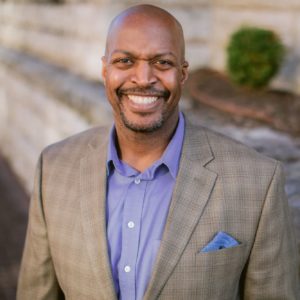My doubts began in the most romantic of settings. I laid on the grass, my head on my backpack, in Champ de Mars park in Paris—the one that’s just below the Eiffel Tower. On a bright winter day, I found myself reading about the myth of Artemis. One of the classes I had enrolled in during my semester in Florence was an introduction to Greek and Roman mythology (not the most pertinent of topics to a computer science major). I was no stranger to the study of ancient sacred texts, having grown up a Bible-reading evangelical. But the text I had read, I had always believed to be true. It was a strange thing to be reading mythology that was not so foreign a literary experience from what I had grown up learning about in Sunday school, except in this case, I believed it to be completely false. Very quickly, on that manicured Parisian lawn, nibbling la barquettes, I was forced to reckon with the fact that there are many thousands of sacred stories out there, all that either now or at some point had many followers who, in some sense, took them as truth. What made me so confident that my book was true, infallible, and that all others were false, especially when they all seemed eerily similar? What reason did I have to be so confident that my tradition had gotten it right, and that so many other very genuine people of faith had gotten it wrong, not to mention those with no faith at all?
Besides the Bible, my conception of story was so inherently tied up with the idea of being made up. A story is something you come up with—a tall tale—or at best, some exaggeration of a distant past. So why had it never bothered me before that my holy book’s Old Testament is 40% narrative?[1] And weird stories, too. I could deal with the New Testament. It felt close enough to some type of historical recounting or at least a work of realistic fiction for me to be able to take it seriously. But the Old Testament—that amalgamation of angels, incest, and talking asses—is an entirely different beast. Surely, I thought, there must be an explanation. Wouldn’t understanding the Bible be a much simpler thing if God had been willing to say what he wanted us to know, plain and clear, in propositional language? A doubt crept into the back of my mind that the only reason my Old Testament was so full of stories was because it was just like every other mythology in existence: a collection of tales created by men to serve man’s purposes. And the lot of similarities between the Bible and other mythologies only served to further this fear.
There is a question that must be answered even before working through the matter of whether Scripture is man-breathed or God-breathed. Regardless of its authenticity, why is so much of Scripture, and so much of religious text in general, written as narrative? Many writers and academics have made arguments for story’s value, but the approach to this question that I think best meets skeptics of narrative (namely hyper analytical, rationality-obsessed Western academics) is the one offered by professor and philosopher Eleonore Stump. In her magnum opus Wandering in Darkness, Stump meticulously crafts the argument that stories are not just pedagogically useful but are an essential component of an honest epistemology. She argues that analytic philosophy must make room for stories in its conception of truth.[2] Laying her epistemological groundwork, Stump divides all knowledge into two categories. She calls one Franciscan and the other Dominican, using the two saints’ preferred modes of teaching as types. Dominican knowledge is that which can be stated propositionally. It is “helpful for making clear distinctions, especially distinctions focused on details, about which argument is possible and often frequent.” Franciscan knowledge, on the other hand, is intrinsically personal; that which is attainable only by first-hand experience or its corresponding form of record (narrative). It is “evocative, memorable, and illuminating.” A similar division of knowledge can be found in almost any field of study: abstract versus concrete, literal versus imagistic, hypothetical versus experiential, etc. Humans are used to thinking about knowledge in these two ways, but in the rationalistic zeal of the Enlightenment, educated Westerners became obsessed with one and suspicious of the other. One became the serious business of scholars, and the other was relegated to children and entertainment. The fact is, Stump argues, any system that acknowledges one but not the other is starved, weak, and altogether inhuman. At the end of the day, we are still human beings, and however much we try to blur the line between machine and mind, our brains stubbornly prefer to think and learn in a certain way. To deny this would be an ignorant, not enlightened.
More than just a human preference, Franciscan knowledge offers a critical advantage: it is resistant to what Stump calls our “pretension to precision.” As she puts it, Franciscan knowledge is ideal “in cases where necessary and sufficient conditions for something are hard to find or in the nature of things not available.” Where Dominican knowledge clumsily falls into oversimplification and reductionism, Franciscan knowledge can image the complexity of interpersonal truth in a way that makes sense to us.
Mythology and religious teaching are particularly suited to Franciscan knowledge, whereas Dominican knowledge often falls short here. In Stump’s words, “in its emphasis on left-brain meditated pattern-processing, philosophy in the Anglo-American tradition has tended to leave to one side the messy and complicated issues involved in the relations among persons.” The Old Testament is nothing if not concerned with the relations among persons. All the Law and the Prophets, after all, can be summed up by “You shall love the Lord your God with all your heart and with all your soul and with all your mind,” and “You shall love your neighbor as yourself” (Matthew 22:34–40). Other mythologies follow suit. They deal with people, the gods, and the relationships between them.[3] Hence, in mythology, we see a fair, even obvious use of the epistemological power of story.
Now we return to my doubts. If the Bible was not a gift of God passed down to man, then man must have had some purpose for creating it, whether conscious or unconscious. Scholars did not begin to question the Bible’s veracity like this en masse until the Enlightenment.[4] Before this point, there was little reason to question motives behind the Bible’s creation. The Bible itself answers that question for us: it is God’s teachings, given to his people for their good (Psalm 19, 2 Timothy 3:16). But with skepticism on the rise, academics and philosophers began to take a more critical look at the Bible. Thinkers like Spinoza and Hobbes set the field of biblical criticism in motion.[5] At this point, I want to examine a few of the counter-traditional explanations I find most intriguing and convincing. Confident in the value of story, I will focus on perspectives that, yet critical, offer a nuanced and deferential view of myth. Then I will examine a Christian view of Old Testament narrative, again focusing on a perspective that shows a meaningful understanding of story’s epistemological value.
The attacks on biblical veracity that make me most nervous do not come in the form of historical criticism. I find comfort in the ancient quality of Scripture. I am wary of evidence just as old as the Bible being taken as any more conclusive than what the Bible itself purports to be true. I find it easy enough to give the Bible the benefit of the doubt in these cases. What keeps me up at night is criticism that has no need for archaeological support because it maintains that authors, even those genuine in their belief, were simply writing what they wanted to be true, or otherwise getting at some other reality besides that of God, out of psychological necessity. The premise seems sound to me. I have many times convinced myself of something I wanted to be true, only to later find out I had actively deceived myself. Can the Bible, and religion as a whole, be explained as an attempt by man to solve man’s problems by fabricating a set of psychologically convenient truths?
This question brings me back to my time spent studying Greek mythology. It was writer and comparative mythologist Joseph Campbell’s work that began to make my head spin with questions. The nature of my doubt was a two-step process, as none of Campbell’s writings that I studied directly criticized the Christian worldview. It was simply his approach to myth which I found to be both convincing and worrying. Campbell saw myth as an artifact of the human subconscious, and therefore took it to be a means of understanding man rather than understanding God. As he explains in The Hero with a Thousand Faces, “where we had thought to travel outward, we shall come to the center of our own existence.”[6] While Campbell was not the first to propose an anthropological view of religion, he did so in a way that was compelling, well-written, and showed a genuine appreciation for beloved, foundational stories, avoiding the condescending tone of many critical scholars before him. His explanations seemed to capture the undeniable grandiosity of mythology without the need for its historical accuracy.
Campbell opens The Hero with a Thousand Faces by explaining his concept of “The Monomyth,” often referred to as The Hero’s Journey. Drawing on Freud and Jung (to whom we will come later) Campbell believed that The Hero’s Journey was not only present in every culture’s mythology, but in every man’s soul. There is something inherent and intrinsic to our understanding of the hero. It is one of the most essential building blocks of our understanding of the world: “looking back at what had promised to be our own unique, unpredictable, and dangerous adventure, all we find in the end is such a series of standard metamorphoses as men and women have undergone in every quarter of the world.”
Again drawing on Jung and Freud, Campbell is particularly concerned with the way that the hero myth pertains to the first half of life. He sees hero stories as the much-needed counteragent to the anxieties and insecurities that try to hold us back from adulthood. We are scared to grow up and we need stories of heroes, paired with rites of passage, to inspire us and model for us the uncomfortable metamorphosis we all must undertake. In this, we see on full display the power and necessity of Franciscan knowledge. Hero stories have the power to model, inspire, and excite. They often serve to illuminate a truth that, when propositionally stated, sounds as simple and as uninspiring as “you must be brave,” and turn it into a captivating character to admire, or even worship.
Even without reading direct biblical criticism, I quickly identified a host of potential ways these concepts could explain away the need for Scripture’s divine authorship. Incomplete but conceivable arguments began to fill my head as I read my Bible. For example, as I read the story of Jacob and Esau I would think something like: the story of Esau giving away his birthright for a cup of stew reflects the innate tension in all of us between the rational and instinctual, and the shame we feel when we give in to our lower-order desires, or the story of Sarah and Hagar reflects the human instinct to blame the ‘other’ out of our own insecurity. I saw a means by which these stories could have reasonably come into existence, and even more so, why, in our need, we would be motivated to believe these stories were true.
I now want to choose a specific Old Testament story to examine more closely, putting to the test how effective this reverse interpretation can be. I will begin by looking at Sigmund Freud’s 1939 book Moses and Monotheism, using it as an example of this psychoanalytic technique of reading a religious myth as a product of the human subconscious.
Freud begins his analysis by laying the groundwork for the version of The Hero’s Journey he will be using, which is one that is specially used for kings and religious founders. These are heroes that nations rally around, that are considered cultural fathers. Freud thinks Moses falls into this category.[7] Drawing on the work of Austrian psychoanalyst Otto Rank, one of Freud’s close colleagues, he walks the reader through a basic outline: The hero is born to parents of noble birth, often the son of the king, there is some obstacle to the child’s birth that had to be overcome, an attempt is made to kill the child, often resulting in the baby being placed in a vessel in water to save him. The child is then discovered by some foreign group, sometimes animals, who raise the child. Once grown, the hero discovers the truth of his noble birth, then “after many strange adventures, wreaks vengeance on his father and, recognized by his people, attains fame and greatness.” Freud lists other origin heroes besides Moses that match this formula, including Sargon (the best comparison), Cyrus, and Romulus, as well as many others whose stories share some of the key elements.
Freud’s case for the existence of this pattern is fairly convincing, especially regarding some of the more seemingly arbitrary recurring elements, such as the motif of the hero-child being sent out into the waters in a basket to save them. It is a consistent enough pattern that it prompts the search for a cause behind the correlation. However, predictably Freud finds the same unconvincing explanation he always finds hidden in the subconscious, “The inner source of the myth is the so-called ‘family romance’ of the child.” He believes that the story of Moses is ultimately a story of a hero rising up against his father, in this case Pharaoh, and in the end victoriously overcoming him, which, he further claims, is ultimately the story of all hero-centric national origin stories, hence the plot congruences. Conveniently, Freud also develops a theory for an alternate origin of Moses which helps to solve the significant problem that Pharoah isn’t actually Moses’s father. He insists that Moses is in fact an Egyptian and was later claimed by the Israelites as one of their own. He supports this with the even flimsier proposition that the true Egyptian Moses belonged to a radically monotheistic sect of the Egyptian religion, with the god Akhenaten as its version of Yahweh. Moses then selected the captive Israelites as a target of indoctrination, which he could lead under his chosen religion. The rest of the book’s arguments depend on these bits of interpretation, and as such, I find them to be weak, as do most Old Testament scholars.[8] I’m not ready to throw out the psychoanalysts’ concept of the monomyth, but Freud does not convince me that a subconscious family romance is the hidden cause.
I now move on to the work of a more widely accepted scholar on the topic of the Old Testament. In a 1952 paper, professor Morton Smith assesses the perceived common theology found in the Ancient Near East and offers a comprehensive explanation for why it exists. Smith begins by addressing the arguments of other Old Testament scholars that attempt to show direct historical transmission between the Old Testament and other earlier Near Eastern religions. He uses Ugaritic mythology as an example. At the time of the paper’s writing there was a trend in Smith’s circles to treat these texts as literary forefathers to the Old Testament.[9] Smith strikes these arguments down quickly. In his view, the relative scarcity of similarities between the two texts is actually more surprising than the fact that any exist. In other words, he’d expect to see more parallels between two mythologies chosen at random. Smith argues that what stands out when studying other Ancient Near East mythologies is that “despite superficial differences, it shows one over-all pattern.” Great variation in small details rule out arguments for heavy historical transmission, but thematic recurrences are notable enough that there may be some driving factor underneath them—something more universal.
Smith goes on to outline the pattern he sees. First, he notes that writings of prayer and praise are almost always directed to a single god, even in polytheistic religions. Additionally, worshippers are often represented as being devoted to a single god above all others. He argues that the existence of stories containing a multitude of gods were probably created mainly for literary purposes, whereas actual religious products—the texts of prayer and praise—are usually more monotheistic in quality. Smith believes that both monotheistic and polytheistic writings arose more out of a sort of convenience than strict theological belief. In his view, it is obvious that mythologies would naturally take on a more polytheistic style because it is difficult to write an interesting story about one god. Inversely, worshipful texts focus on a single god, because of their exultant nature: “The god being worshiped is regularly flattered… sometimes, even when worshiped in close connection with other deities, [treated as] the only god.” These points raise a few questions. First, the Old Testament itself is a notable counterexample to Smith’s proposition that polytheism is a necessary result of followers’ desire for mythological stories. The Old Testament is full of narrative, while remaining monotheistic. The Old Testament does introduce other supernatural beings, but none are ever worshipped or even associated with any religious practice. The Old Testament proves that early authors, going with Smith’s argument that humans were the sole origin of their mythologies, could have been capable of staying within the bounds of monotheism when creating their myths, had they a reason to. Similarly, the Old Testament counters Smith’s second point. While the more monotheistic-sounding prayers and hymns found in otherwise polytheistic theologies might be explained by the worshipers’ desire to flatter a particular god, this does not explain why there are no other deities in the collected text of the Old Testament ever worshipped besides Yahweh. I imagine the argument that might follow is that monotheism may have been cemented later in the development of Judaism, and retroactively the polytheistic elements of Scripture were pruned. However, I don’t find this argument to be a decisive counterpoint. It is an unfalsifiable speculation at best. It also does not explain why the Old Testament is not only positively monotheistic, but also polytheism-aware and yet anti-polytheistic. One of the primary commands from God’s prophets is to turn away from the worship of other gods. The rhetorical convenience argument is not robust enough to explain a nation’s millennia-spanning, back-and-forth wrestling with idolatry. This argument of Smith’s takes too shallow a view of the story of the relationship between Yahweh and his people described in the Bible.
“So,” a charitable reader might say at this point, “Great work. You’ve taken down the enemies of faith.” Unfortunately, it is not so easy as that. Smith’s arguments continue for pages, and I have only addressed his opening points. It is much more robust work than Freud’s, and to dismantle would be a daunting task. As an expert of ancient history, drawing on a deep understanding of vast swathes of historical religious beliefs, Smith has come up with a host of reasons why humans, in their need, would over time create a set of beliefs that looks like Judaism and then Christianity. He points to the need for psychological comfort, political manipulation, for a sense of security amidst the unpredictability of life, and many other desires and mechanisms of generating beliefs common among people. His explanations are coherent and nuanced. They are worth wrestling with, and I will continue to, likely for years to come. But the point I have attempted to make in the preceding paragraph is that these arguments can be wrestled with. When pushed, they budge, and the complexity of the debate becomes apparent. A few sentences featuring the word subconscious cannot be the end of it. My doubts must be attended to. The longer I let them linger in the back of my mind, the more power they gain, in the form of imprecise taunts. To deal with them, serious fear and trembling is in order.
Now that I have looked into the face of the ideas that scare me most, I allow myself to turn to an argument that feels like the warm embrace of an intellectual father. C.S. Lewis’ essay “Myth Became Fact” addresses the idea of the monomyth, again with an appreciative and well-studied approach like Campbell’s but paired with a humble Christian faith. He starts by seeking to answer a friend’s question of why even “enlightened pseudo-Christians,” who don’t necessarily believe Christian doctrine any longer, continue to use the ancient, awkward system of Christian religion, with its archaic language, uncomfortable stories, and nonsensical rituals.[10] Lewis argues that, like the clunky British monarchy that continues to persist alongside modern statecraft in UK politics, in Christianity it is “the myth which is the vital and nourishing element in the whole concern.” The great biblical mythos, with its ever-pertinent, ever-piercing Franciscan power, has endured, as countless rivals and detractors fell away with time. Today, there are still many believers. Scripture has not required the help of innovation to remain relevant.
Lewis raises the historical fact of Christian myth’s persistence, and then answers the question of why it is the case. In language that mirrors (and may have inspired) Eleonore Stump’s, Lewis remarks “Human intellect is incurably abstract.” No matter how much we would like to stick to the mechanical language of proposition and logic, the human mind is grounded in the concrete and the imagistic. The experience of a thing or a person can never be reduced to the fact of its existence. Both must somehow be captured to accurately describe reality. This is the problem that myth helps solve. Now Campbell, Freud, and Jung explicitly, and Smith implicitly affirm this value of myth, but the question of where to place the greater truth that myth points to on the metaphysical spectrum is where these men differ from Lewis in their belief. Where psychoanalysts look inside the man for the myth’s source, Lewis looks to heaven, to the universal and transcendent. Lewis believes that mythologies share similarities because all myths point to a common divine truth, each with varying levels of accuracy and precision. To paraphrase, even more than truth, which is about something, we can think of myth as a reality itself, from which countless truths flow. This provides an explanation for the innumerable pagan myths throughout history and the ones still present today that sound familiar to readers of the Bible. We should expect them to be there. It is not simply a result of the common human experience—the collective subconscious—that these archetypal stories come to exist. It is the fact that we all have some ability to sense the foundational nature of the universe, and in our storytelling and our grasping for religion, we simply try to express what we see the best we can.
I still hear the jeers of my doubts from time to time. I am often left confused and uncomfortable as I work through Genesis or Judges. But I have arrived at a place where I can live with the tension of doubt and belief, knowing I’m in a wrestling match which may last a lifetime. I dare not let my doubts stop me from enjoying the stories the Creator of the universe chose to give to his people. Critics like Morton Smith remain, with a swarm of arguments that I must continue to pick away at. But I chose to take a leap of faith when I accepted Christ, and I fell into the Father’s loving arms. So, when I read, taking in the great metaphors of divine reality, I find comfort in a truth that feels far deeper, far more secure than the most elegant of arguments.[11] There is a shape to reality that lies independent of our attempts to describe it with sentences. As best as I can tell that shape looks a lot like grace. It is the shape of the Hero who lays down his life for his people, victoriously overcoming death by dying to himself. The more I stretch and strain, trying to get a look at the boundless unknown of the absolute, the more clearly I see the face of my Savior.
[1] Berreth, Rob. “The Old Testament Narratives: Their Proper Use (Part 6).” Redeemer Church, 26 July 2010, redeemernw.org/blog/learners/a-way-to-read-the-bible/the-old-testament-narratives-their-proper-use-part-6.
[2] Stump, Eleonore. Wandering in Darkness. Oxford University Press, 2010. See especially pp. 25, 41, 47,
[3] Campbell, Joseph, et al. The Power of Myth. Turtleback Books, 2012.
[4] Woodbridge, John. “The Rise of Biblical Criticism in the Enlightenment.” The Gospel Coalition, 11 July 2024, www.thegospelcoalition.org/essay/the-rise-of-biblical-criticism-in-the-enlightenment.
[5] McCarthy, John C. Modern Enlightenment and the Rule of Reason. Catholic University of America Press (Bibliovault) : Catholic University of America Press, 2018.
[6] Campbell, Joseph. The Hero with a Thousand Faces. Joseph Campbell Foundation, 2020. See especially pp. 8, 12, 23.
[7] Freud, Sigmund, and Katherine Jones. Moses and Monotheism. Vintage Books, 1967. See especially pp. 7, 17, 18, 97.
[8] Kaplan, Lawrence. “Moses, Murder, and the Jewish Psyche.” Jewish Review of Books, 23 July 2024, jewishreviewofbooks.com/articles/3051/moses-murder-jewish-psyche/.
[9] Smith, Morton. “The Common Theology of the Ancient Near East.” Journal of Biblical Literature, vol. 71, no. 3, Sept. 1952, p. 135, https://doi.org/10.2307/3261800. See especially pp. 1, 2, 3, 4, 5, 6
[10] Lewis, C. S., and Walter Hooper. God In the Dock: Essays on Theology and Ethics. William B. Eerdmans Publishing Company, 2014. See especially pp. 63–67
[11] Foreman, James Taylor. Why I Am Christian Again, The Metaphor, 31 Mar. 2024, www.taylorforeman.com/p/why-i-am-christian-again.





